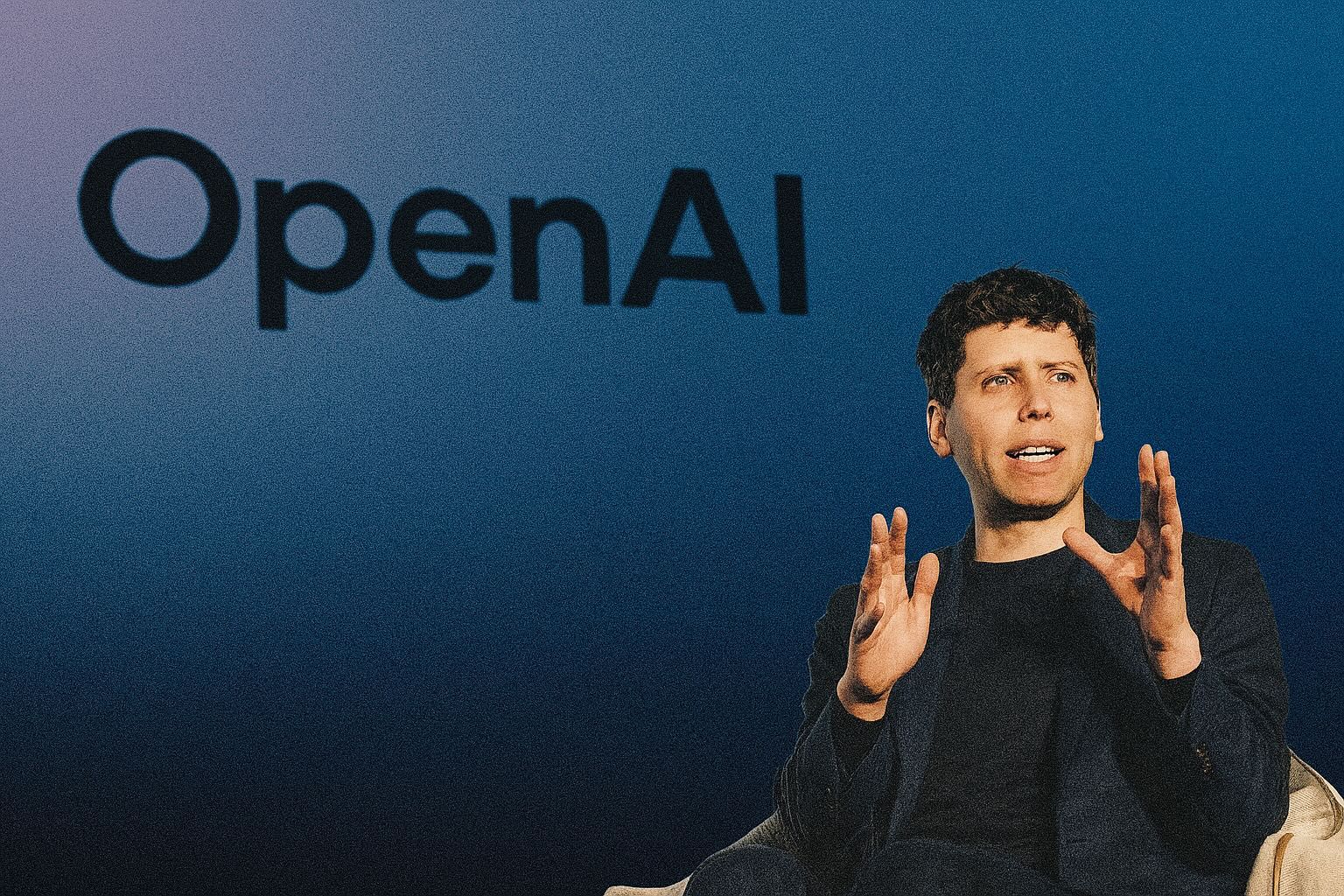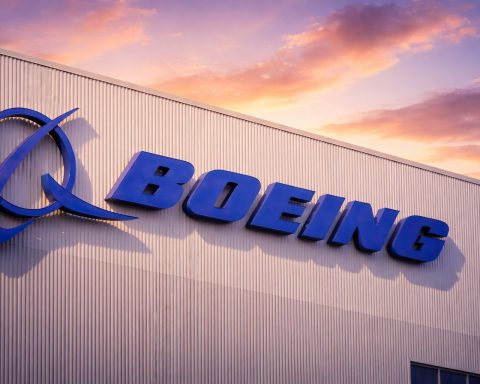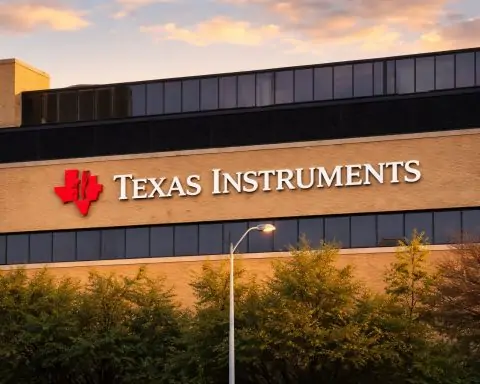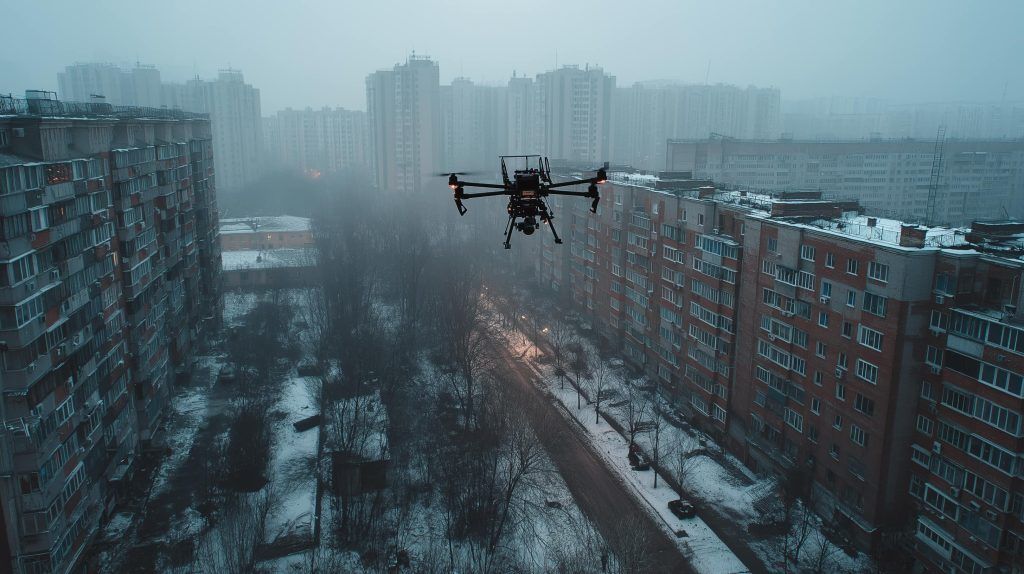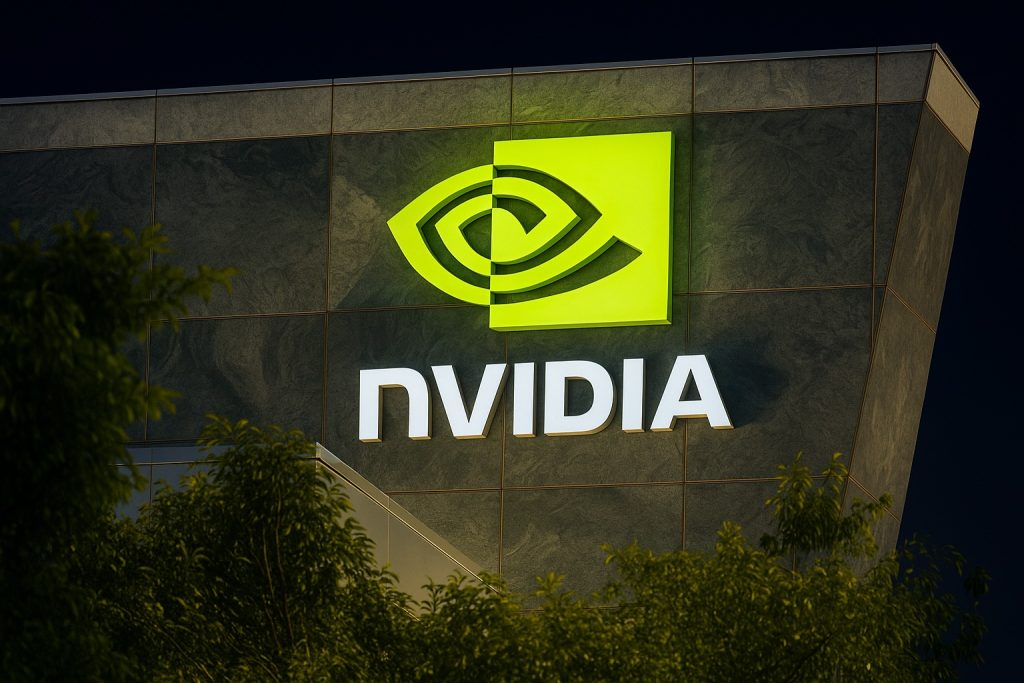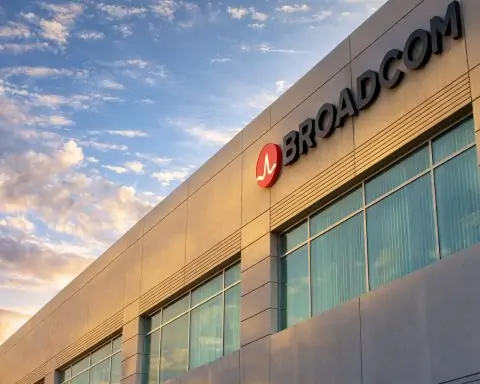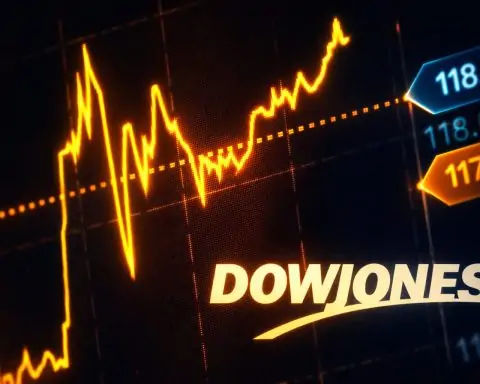- OpenAI CEO Sam Altman told tech reporters in San Francisco that the AI industry is in a frenzy and warned of a bubble.
- OpenAI’s private funding rounds have pushed its valuation to around $300 billion or more, with talk of a potential secondary sale at about $500 billion.
- Mira Murati’s new AI venture reportedly raised about $2 billion at a $12 billion valuation despite no product or revenue.
- Nvidia’s stock price surge propelled its market capitalization to $4 trillion by July 9, 2025, up about 1,300% since late 2022.
- The Magnificent Seven tech giants now account for nearly one-third of the S&P 500’s value, a concentration last seen at the 2000 dot-com peak.
- The S&P 500’s price-to-book ratio reached 5.3 and forward P/E multiples are at levels not seen since 1929.
- In the first half of 2025, US startup funding rose 76% year-over-year to $162.8 billion, with AI deals comprising about 64% of that total.
- CoreWeave, a cloud AI infrastructure startup, rose from $40 to about $187 at peak after its 2025 IPO, then fell 33% in two days, erasing roughly $24 billion in value.
- UBS estimated private credit to the tech sector had swollen to about $450 billion, fueling AI investment while signaling overheating risk.
- Altman emphasized the kernel of truth—the transformative potential of AI—but cautioned that excessive hype could lead to a painful correction.
AI Gold Rush or Dangerous Bubble? OpenAI CEO Sounds the Alarm
The artificial intelligence boom has investors buzzing – but even the man who helped spark the frenzy is sounding the alarm about a possible bubble. OpenAI CEO Sam Altman, whose ChatGPT helped kick off the AI investment rush, now warns that the AI sector may be in “bubble” territory [1]. His caution raises a pressing question: Is the surging AI market driven by genuine technological revolution, or have valuations become dangerously detached from reality? This report dives into Altman’s concerns, what an “AI bubble” means, the red-hot state of the industry, expert warnings of overvaluation, and why some remain optimistic about AI’s future despite the hype.
What Is an “AI Bubble”?
In economic terms, a bubble refers to a period when asset prices or valuations rise rapidly and far exceed any reasonable linkage to underlying fundamentals, often driven by exuberant, even irrational, investor behavior. Eventually, bubbles “pop” – prices crash back down to earth – once it becomes clear the lofty valuations can’t be justified by real profits or adoption. An “AI bubble” implies that AI-related companies and investments are being bid up to unsustainable levels not supported by current earnings or technology readiness. Historical examples loom large: during the late-1990s dot-com bubble, internet startups with little revenue attained sky-high market caps, only for the Nasdaq to plunge nearly 80% when the bubble burst in 2000–2002 [2]. The core technology (the internet) did change the world, but many early dot-com ventures went bust because their valuations outran reality.
By drawing parallels to past bubbles, observers suggest today’s AI gold rush could be showing similar warning signs of over-exuberance. Investors are pouring money into anything labeled “AI,” and valuations are soaring well beyond what current business metrics seem to support. The key fear is that if expectations far outrun what AI can deliver in the near term, a sharp correction could follow, hurting investors and firms that bought into the hype.
Altman Rings the Alarm on AI Hype
Sam Altman’s bubble warning carries special weight: as OpenAI’s CEO, he’s at the epicenter of the AI boom and one of its biggest champions. Yet, at a recent dinner with tech reporters in San Francisco, Altman bluntly agreed that investors are overhyping AI. When asked if the industry is in a frenzy, he answered “Yes,” comparing today’s excitement to the dot-com boom of the 1990s [3] [4]. Altman noted that “when bubbles happen, smart people get overexcited about a kernel of truth” [5]. In this case, the “kernel” is real – AI truly is a transformative technology, potentially “the most important thing to happen in a very long time,” as Altman put it [6]. But he believes investors as a whole have become “overexcited”, chasing anything with “AI” in its pitch.
Altman is in a unique position of both hyping and warning about AI. On one hand, he’s leading OpenAI to push the technology’s limits; on the other, he’s urging caution about unsustainable excitement. He reportedly used the word “bubble” several times in just a few moments – and even begged reporters not to make it a headline, which of course only invited more headlines [7]. “Are we in a phase where investors as a whole are overexcited about AI? My opinion is yes,” Altman admitted, “Is AI the most important thing to happen in a very long time? My opinion is also yes.” [8]. This duality captures the situation: AI is a game-changing innovation, but the frenzy of capital chasing AI deals could end in tears if it outruns what the technology can realistically deliver in the short term.
Altman specifically criticized the sky-high valuations of some AI startups that have little more than a concept or demo, cautioning that “someone’s gonna get burned” by these bets [9]. It’s rare for a CEO at the center of a hype cycle to tap the brakes so publicly. But Altman’s candor underscores growing anxiety that today’s AI fever may be setting up investors for disappointment – even as companies like his continue to attract enormous funding.
Red-Hot AI Sector: Startups and Stocks Soaring
By many measures, the current AI sector is on fire – which is exactly why bubble fears are growing. From Silicon Valley venture deals to Wall Street stock prices, anything connected to AI has seen valuations explode. Consider a few eye-popping examples:
- Startup Funding Frenzy: Venture capital investment in AI has surged at an unprecedented pace. In the first half of 2025 alone, U.S. startup funding jumped nearly 76% year-over-year to $162.8 billion, and AI-related deals accounted for roughly 64% of that total value [10]. In other words, almost two-thirds of all VC money now goes into AI. Investors are racing to back AI startups at astronomical valuations – often before those startups have a proven product or profit model. For instance, OpenAI’s former CTO Mira Murati raised about $2 billion this summer for her new AI venture at a staggering $12 billion valuation – despite the company having no product or revenue yet [11] [12]. That early-stage deal, led by top-tier VC Andreessen Horowitz, underscores how even unproven AI teams can command valuations usually reserved for established Fortune 500 firms. Such enthusiasm reflects confidence in the founders’ talent and AI’s potential – but it also hints at a market “detached from reality,” as one tech observer noted about the case [13] [14].
- Sky-High Valuations: Established AI companies are also seeing their valuations skyrocket. OpenAI itself, the maker of ChatGPT, has reportedly been valued at $300 billion or more in private funding rounds [15], and is even eyeing a potential secondary share sale at a half-trillion dollar ($500 billion) valuation [16] [17]. If achieved, that would make OpenAI the most valuable private tech company in history – despite the fact that, by Altman’s own admission, the company is not yet profitable (its annual revenue run-rate may exceed $20 billion, but its immense computing costs still outstrip revenue [18]). Similarly, numerous other AI startups have become “unicorns” (valued over $1 billion) at a record pace. Many are raising hundreds of millions of dollars on the promise that their algorithms will revolutionize industries – even if meaningful earnings could be years away (or never materialize). This kind of “growth at any price” mentality is a classic hallmark of investment bubbles.
- Stock Market Mania: It’s not just private startups – public market investors have piled into AI-related stocks, driving them to stratospheric heights. Nvidia, the leading maker of AI chips, saw its stock price and market capitalization absolutely skyrocket thanks to AI demand. By mid-2025, Nvidia became the first ever $4 trillion publicly traded company, after its stock soared over 1,300% since late 2022 [19]. This astonishing rise reflects genuine revenue growth (Nvidia’s sales and profits have ballooned with the rush for AI hardware) but also a euphoria around its future potential. Big Tech firms more broadly have ridden the AI wave; the “Magnificent Seven” tech companies (which include AI-heavy players like Nvidia, Apple, Microsoft, Alphabet/Google, Amazon, Meta, etc.) now make up nearly one-third of the S&P 500 index’s entire value – a level of concentration in tech last seen at the peak of the dot-com bubble in 2000 [20]. Since 2015, those top seven stocks have collectively surged about 2,800%, overshadowing the S&P’s other 493 companies (which gained just 129% in that period) [21]. This narrow, AI-fueled market rally has prompted warnings that major indexes are being propped up by hype around a few names. Valuation metrics add to the concern: the S&P 500’s price-to-book ratio has hit 5.3 (higher than even during the dot-com boom), and forward price-to-earnings multiples are approaching levels not seen since 1929 – right before a historic crash [22].
Taken together, these signs paint a picture of an AI sector awash in capital and optimism – possibly too much optimism. When fledgling startups without products are worth billions, when every big company touts its AI pivot to bump its stock, and when AI leaders themselves acknowledge investor “overexcitement,” it’s easy to see why bubble talk is spreading. As one Reddit investor quipped, “AI’s in bubble mode, but bubbles print gains before they pop. Just don’t baghold the hype tickers too long.” [23] The challenge, of course, is knowing when (or if) the bubble will pop.
Wall Street Warnings: Echoes of Dot-Com
Altman is far from alone in worrying that AI has entered bubble territory. A chorus of industry experts, analysts, and investors has been raising caution flags, often explicitly likening today’s environment to the late 1990s tech mania. Some noteworthy warnings and insights include:
- Dot-Com Déjà Vu: “More investors will suffer than suffered in the dot-com crash,” cautioned Erik Gordon, a University of Michigan business professor, after observing the AI sector’s recent jitters [24] [25]. He pointed to the first cracks in the frenzy – notably the example of CoreWeave, a cloud AI infrastructure startup. CoreWeave went public earlier in 2025 and initially saw its stock skyrocket (from a $40 IPO price to nearly $187 at peak) amid AI enthusiasm [26]. But when the company disclosed huge spending and debt in its rush to build data centers, its stock plunged 33% in two days (erasing about $24 billion in value) [27]. Gordon views that swift comedown as an omen that some AI high-flyers will face reality checks, potentially foreshadowing a broader sell-off. “That was an early crack,” he said – one that hints the fallout from an AI bubble burst “could be harsher” than the dot-com implosion [28].
- Overvaluation Red Flags: Seasoned market observers are openly comparing metrics with past bubbles. Torsten Sløk, chief economist at Apollo Global Management, warns that today’s AI stocks are even more overvalued than internet stocks were in the late ’90s [29]. Ray Dalio, the billionaire founder of Bridgewater Associates, similarly remarked that dangerously high tech valuations, combined with rising interest rates, could “prick the bubble” in AI [30]. Dalio’s advice is to remember that “there’s a major new technology that will certainly change the world… but some people are confusing that with the investments being successful.” [31] In other words, AI will likely transform industries long-term – but that doesn’t guarantee every AI stock or startup will justify its valuation. Bank of America strategist Michael Hartnett has highlighted the froth as well, noting the S&P 500’s valuation ratios (like that record price-to-book of 5.3) and suggesting the market’s exuberance around AI is reaching unsustainable extremes [32]. Veteran investor Richard Bernstein has been advising clients to avoid chasing “AI FOMO” – the fear of missing out on the next AI winner – and instead stick to more value-oriented plays until the hype settles [33].
- Cheap Money Fueling the Boom: Another factor drawing concern is the role of easy capital in inflating the AI boom. UBS strategists recently warned that a surge of private lending is helping prop up the AI investment frenzy – which could amplify the risks of a bubble [34] [35]. In a mid-August note, UBS estimated that private credit (non-bank loans) to the tech sector has swelled to about $450 billion – much of it aimed at financing AI startups and data centers [36]. Tech firms hungry to build AI infrastructure have eagerly tapped this debt. This flood of capital can “sustain significant growth plans” for AI companies but is also “sowing the seeds” of potential overheating [37]. In other words, the more money chasing AI, the greater the risk of a painful correction if those growth plans don’t pan out. It’s a dynamic reminiscent of past bubbles where abundant cheap financing fueled a rush of investment (think of the subprime loans in the housing bubble) – until confidence faltered. The fact that even staid institutions like UBS are flagging “overheating risk” in AI shows how mainstream the bubble concerns have become.
In sum, a diverse set of voices – tech CEOs, Wall Street analysts, economists, and veteran investors – are now publicly airing the idea that the AI sector may be riding for a fall. The common thread in these warnings is not that AI will disappear or fail to deliver long-term – few doubt its revolutionary potential – but rather that too much money is pouring in too fast, chasing too few truly solid opportunities. As Altman noted, bubbles form around “a kernel of truth” [38]. The truth here is that AI is transformative; the bubble risk is that investors may be extrapolating that truth into unrealistic valuations for nearly anything associated with AI.
Optimism Amid the Hype: Why Many Still Bet Big on AI
Not everyone believes the AI boom is a bubble destined to bust. Plenty of industry leaders and investors remain bullish that this wave of innovation will justify the high valuations – or at least that any correction will be temporary on the way to even greater heights. Their perspective: the world-changing potential of AI is real, and we’ve only scratched the surface of its economic impact. Here are some points the optimists highlight:
- Genuine Growth and Profits: Unlike many dot-com era companies that had no revenue at all, today’s AI giants are already delivering tangible financial results. For example, Nvidia’s earnings have exploded thanks to insatiable demand for AI chips, and other “Magnificent 7” tech firms are seeing real profit boosts from AI initiatives. In fact, the top seven U.S. tech companies collectively managed a 26% year-over-year jump in earnings in a recent quarter, which “indicates real financial momentum” underlying their stock surges [39]. This suggests that at least for the market leaders, valuations aren’t purely speculative – they’re backed by rising income streams (though skeptics note those gains are concentrated in a few firms, not broad-based). Optimists argue that as AI applications spread, more companies will translate AI into productivity and profit growth, eventually catching up to lofty valuations.
- Infrastructure and Investment for the Future: One reason some aren’t fretting about an AI bubble is that the massive capital inflows are building something lasting. Even if some startups fail or stock prices dip, the billions being spent on AI development are creating real technological infrastructure and capabilities. For instance, tech giants are spending unprecedented sums on AI R&D and cloud infrastructure – effectively laying the groundwork for a more AI-driven economy. Microsoft’s CEO Satya Nadella recently said the company will spend over $30 billion in just one quarter to expand data centers for cloud and AI demand [40], noting Microsoft is scaling its data center capacity “faster than any competitor” to keep up. Google, Meta, and even non-tech firms like Blackstone are collectively planning to invest hundreds of billions of dollars to build cutting-edge AI data centers and computing power [41]. This “arms race” in AI infrastructure is reminiscent of how telecom companies laid vast fiber-optic networks during the internet boom. When the dot-com bubble popped, those fiber networks remained – eventually enabling the broadband and mobile revolutions that followed. Similarly, the data centers, AI chips, and software platforms built during this period could become the foundation of the next decades’ digital economy [42]. As one analysis noted, “even if valuations come down, the hardware and infrastructure being laid today may become the lasting legacy” of this boom – an enduring benefit to productivity and innovation [43].
- Long-Term Transformation > Short-Term Hype: Believers in AI’s promise say that focusing only on near-term valuations misses the bigger picture. They see today’s AI breakthroughs as the beginning of a multi-decade technological revolution – one that could reshape entire industries from healthcare and education to finance and transportation. In that context, even if the market gets ahead of itself at times, the growth runway for AI is enormous. For instance, Altman himself, despite warning of a bubble, is doubling down on OpenAI’s long-term vision: he expects “billions of people a day” will use AI assistants like ChatGPT in the coming years and is preparing to spend “trillions of dollars” on advanced AI data centers to meet future demand [44] [45]. That staggering commitment reflects a view that we’re still in the early innings of AI adoption globally. Many venture capitalists and tech executives share this sentiment – that now is the time to invest aggressively, because AI’s impact will only grow. They argue that while some ventures will flame out (as in any gold rush), the ultimate winners could be among the most valuable companies ever, so early high valuations may eventually look justified. A Seeking Alpha analyst recently contended that Nvidia’s seemingly high stock price isn’t a “bubble” at all but “correctly priced” for its dominant position in powering the AI future [46]. In short, optimists believe the AI sector’s fundamentals – rapid technological advances and surging demand for AI solutions – can support sustained growth even if there are bumps along the way.
- Selective Opportunities: Another moderate stance among investors is that not all of AI is in a bubble – some segments may be overhyped, but others offer solid, even underappreciated opportunities. For example, while anything with “generative AI” in its pitch deck might be fetching crazy prices, there could be value in the “picks and shovels” of the AI boom (companies providing the tools, infrastructure, or enterprise software that enable AI). Some analysts suggest looking at established firms adopting AI to enhance their business (and trading at reasonable multiples) rather than chasing every new AI startup with a sci-fi premise. There’s also the view that AI is boosting the broader economy already – recent data shows surging investment in AI is contributing to GDP growth, especially via capital spending on equipment and software [47]. That means AI isn’t just vaporware; it’s tangible economic activity. As long as that’s true, the argument goes, the sector has real support beneath the hype.
None of this is to dismiss the risks. Even optimistic voices acknowledge that some AI investments will flop and a shakeout is likely – much like the dot-com bust cleared out scores of Web startups, leaving a stronger ecosystem afterward. But they contend that AI’s trajectory is fundamentally upward for the long haul, and smart investors or companies should not be scared off by the “bubble” talk so long as they focus on substantive innovation and long-term value.
Conclusion: Navigating the AI Gold Rush
The debate over an AI bubble ultimately reflects a classic tension in tech investing: how to balance excitement for world-changing innovation with level-headed scrutiny of economic reality. On one side, warning signs of exuberance are undeniable – frenzied funding rounds for pre-revenue startups, trillion-dollar market caps based on future promises, and experts openly invoking the specter of past bubbles. Even Sam Altman, who helped unleash the AI tsunami, is urging the industry not to lose its head in the hype [48] [49]. On the other side, the transformative power of AI is equally undeniable – this isn’t a speculative fad like tulip bulbs or meme stocks, but a technology already driving real productivity and breakthroughs, with far more to come.
The truth may be that we are both in a boom and a bubble, depending on where one looks. Certain pockets of the AI sector likely have over-inflated valuations that will need to come down to earth (and some investors will indeed “get burned,” as Altman warns [50]). At the same time, the overall progress and adoption of AI could very well continue its upward march, much as the internet did after the dot-com bubble burst. As venture capitalist Marc Andreessen (a backer of many AI startups) has pointed out, technological revolutions often come with speculative crazes – yet those crazes fund the infrastructure that later delivers enormous societal value. The key is differentiating between speculation and substance.
For investors and observers, the takeaway is to stay informed and cautious but not cynical. The current AI frenzy will undoubtedly evolve: we may see a shakeout where weaker players fall and stronger ones emerge with clearer business models. Valuations for some high-flyers could reset, even as the AI trend marches on. If there’s a mantra for this moment, it might be “invest in AI, but don’t buy into all the hype.” Skeptics are right that not every “AI-powered” idea will be a goldmine. Believers are right that AI is rewriting the rules of what’s possible – and potentially creating huge winners.
As of August 2025, Sam Altman’s bubble warning has put the AI industry on notice. Coming from the figurehead of the AI boom, his words resonate: this is a time for both excitement and vigilance. For the general public, businesses, and investors, the advice is simple. Enjoy the benefits and breakthroughs of the AI revolution – but keep your eyes open for excess and exercise due diligence amid the hype. The line between a tech boom and a tech bubble is often clear only in hindsight. With AI, the world is betting that the boom will ultimately win out over the bubble. Only time (and perhaps a few market cycles) will tell how this extraordinary chapter in technology history plays out.
Sources:
- CNBC Daily Open – “Is the AI industry in a bubble, as OpenAI CEO says?” (Aug. 19, 2025) [51] [52]
- Quartz – “Sam Altman sees an AI bubble forming” (Aug. 2025) [53] [54]
- Silicon UK – “OpenAI’s Altman Warns of AI ‘Bubble’” (Aug. 19, 2025) [55] [56]
- Fortune (via Yahoo Finance) – “Sam Altman might be right: AI investors are ‘overexcited’ but is it a bubble?” (Aug. 19, 2025) [57] [58]
- Reuters – “Nvidia’s $4 trillion milestone caps rise of stock market behemoth” (July 9, 2025) [59] [60]
- Reuters – “Mira Murati’s AI startup valued at $12 billion in early-stage funding” (July 15, 2025) [61] [62]
- UBS Global Research note (via Bloomberg/PYMNTS) on AI and private credit (Aug. 2025) [63] [64]
- Business Insider (via Quartz) – comments by Erik Gordon on AI vs dot-com bubble [65]
- Statements by Ray Dalio (via Financial Times) and Torsten Sløk (Apollo) on AI valuations [66] [67]
- Altman quotes at SF event (via The Verge/Quartz) [68] [69] and OpenAI data from press statements [70].
References
1. www.silicon.co.uk, 2. www.silicon.co.uk, 3. qz.com, 4. qz.com, 5. qz.com, 6. www.silicon.co.uk, 7. www.ainvest.com, 8. www.silicon.co.uk, 9. qz.com, 10. www.reuters.com, 11. www.reuters.com, 12. www.reuters.com, 13. medium.com, 14. medium.com, 15. www.silicon.co.uk, 16. www.silicon.co.uk, 17. www.silicon.co.uk, 18. www.silicon.co.uk, 19. www.reuters.com, 20. www.reuters.com, 21. x.com, 22. qz.com, 23. www.reddit.com, 24. qz.com, 25. qz.com, 26. www.silicon.co.uk, 27. qz.com, 28. qz.com, 29. qz.com, 30. qz.com, 31. qz.com, 32. qz.com, 33. qz.com, 34. www.pymnts.com, 35. www.pymnts.com, 36. www.pymnts.com, 37. www.pymnts.com, 38. qz.com, 39. www.ainvest.com, 40. www.pymnts.com, 41. www.pymnts.com, 42. qz.com, 43. qz.com, 44. www.silicon.co.uk, 45. www.silicon.co.uk, 46. seekingalpha.com, 47. qz.com, 48. qz.com, 49. www.silicon.co.uk, 50. qz.com, 51. www.ainvest.com, 52. www.ainvest.com, 53. qz.com, 54. qz.com, 55. www.silicon.co.uk, 56. www.silicon.co.uk, 57. qz.com, 58. qz.com, 59. www.reuters.com, 60. www.reuters.com, 61. www.reuters.com, 62. www.reuters.com, 63. www.pymnts.com, 64. www.pymnts.com, 65. qz.com, 66. qz.com, 67. qz.com, 68. qz.com, 69. qz.com, 70. www.silicon.co.uk
